Olympique Marseille currently sit 2nd in Ligue 1, 7 points behind league leaders Paris Saint-Germain. After a stint as Andrea Pirlo’s assistant at Juventus and head coach at Hellas Verona in Serie A, Igor Tudor has finally been given the backing of a major European club in the top five leagues, to attempt to lead them to consecutive UEFA Champions League places.
A major reason behind their high position in the league table so far is the use of corner kicks to be the difference maker in tight games. The majority of goals from corners have proven to be decisive, by changing the game state, and Marseille have earned 15 points in the league as a result. These points are the difference makers between a spot in second place, still competing for the league title or a spot in mid-table. From 8.4 xG from corners, Marseille have found the back of the net on 10 occasions, showing a slight overperformance in their heading abilities.
In this tactical analysis, we will dive into the tactics used by Olympique Marseille, with an in-depth analysis of how dead ball specialists can make corners a viable method of chance creation, no matter if the team is big or small. This set-piece analysis will look at the reasons behind the different routines used depending on the opposition team’s defensive set-up.
Attacking set-up
During offensive corners, Marseille have often set up in the shape pictured below, with five players attacking the area around the six-yard box, one player attacking the box from deep and the three remaining outfield players surrounding the 18-yard box. An attacking set-up like this has every player from the offensive team in the final third ensuring that the attackers are able to force the defending team inside their own third.
Any time the ball is cleared, the Marseille players are positioned high up the pitch, spread horizontally to ensure they can always be the first player to get to the loose balls, preventing defending teams from being able to get out of their box.
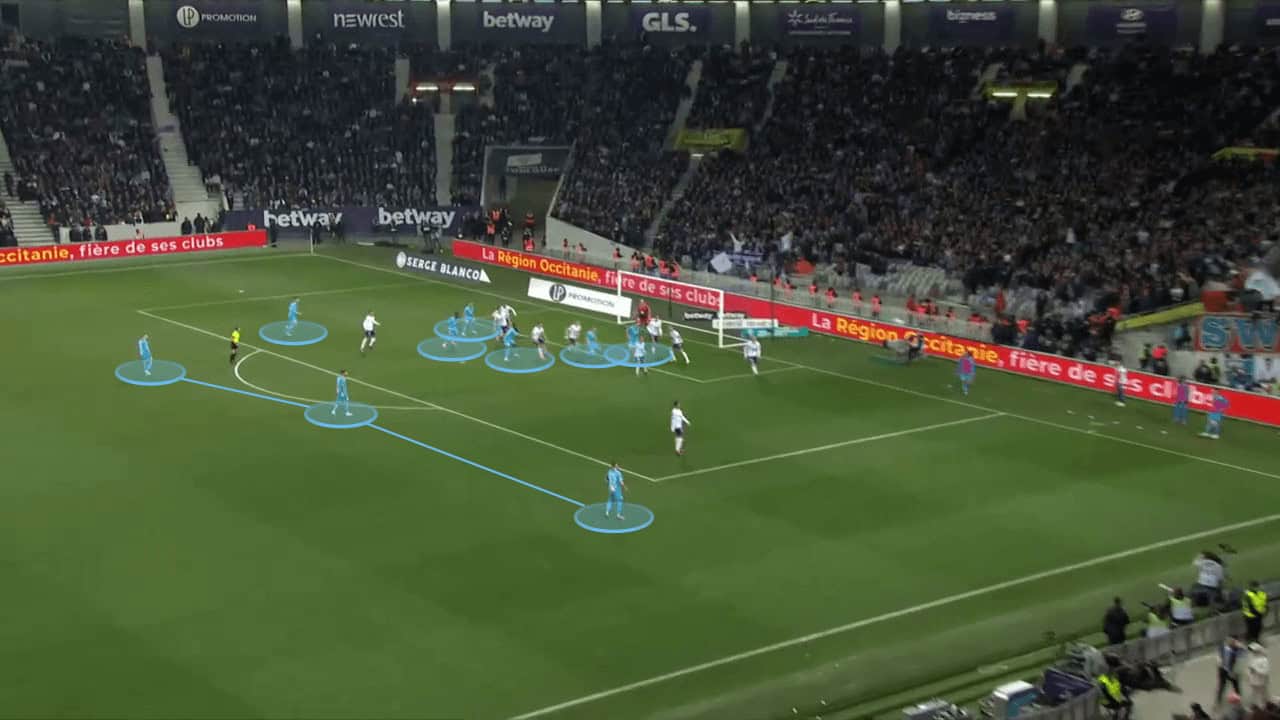
Being so attacking also forces defending team to defend with all outfield players as leaving an attacker up the pitch will likely mean that they are outnumbered inside their own box. As a result, being extremely attacking from corners also forces defending teams to leave no one up the pitch, and so being attacking from corners can help reduce the possibility of being counter-attacked indirectly.
Flat far-post crosses
The key difference between Marseille and any other club around Europe, is the number of dead ball specialists in their squad, meaning the quality and consistency of corners taken each game is higher than any other team. Dimitri Payet, Alexis Sanchez and Cengiz Under to a slightly lesser extent have all shown superb ball-striking qualities, whilst winter signing Ruslan Malinovskyi has further added to the firepower Marseille contain during dead balls. This ability to strike through the ball means that Marseille’s corners can be whipped in with pace and precision consistently, making it extremely difficult for opposing defences to be able to deal with the flight of the balls.
One of the clearest benefits of being able to strike through the ball from corners is that it can reach its target area quicker than usual. In most cases, a cross to the back post can be seen as risky, with defenders having plenty of time to either judge the flight of the ball or to reach it due to the added distance it travels over. However, when Marseille attempt these corners, the trajectory of the ball is very flat, meaning it can reach its destination much quicker than the average corner. As a result, Marseille very often attempt to whip the ball towards the back post, where attackers can attack the ball unopposed, whilst defenders struggle to backtrack towards the ball.
We can see in this example below, Malinovskyi attacking the ball on the far side of the box, whilst no defending player has the time to turn their body and attack the ball. Usually, the cross would have to be more looped to reach the target area, giving defenders time to reach the ball before it is about to touch the ground, but in Marseille’s case, the ball reaches the target area before defenders even have the time to turn their bodies.
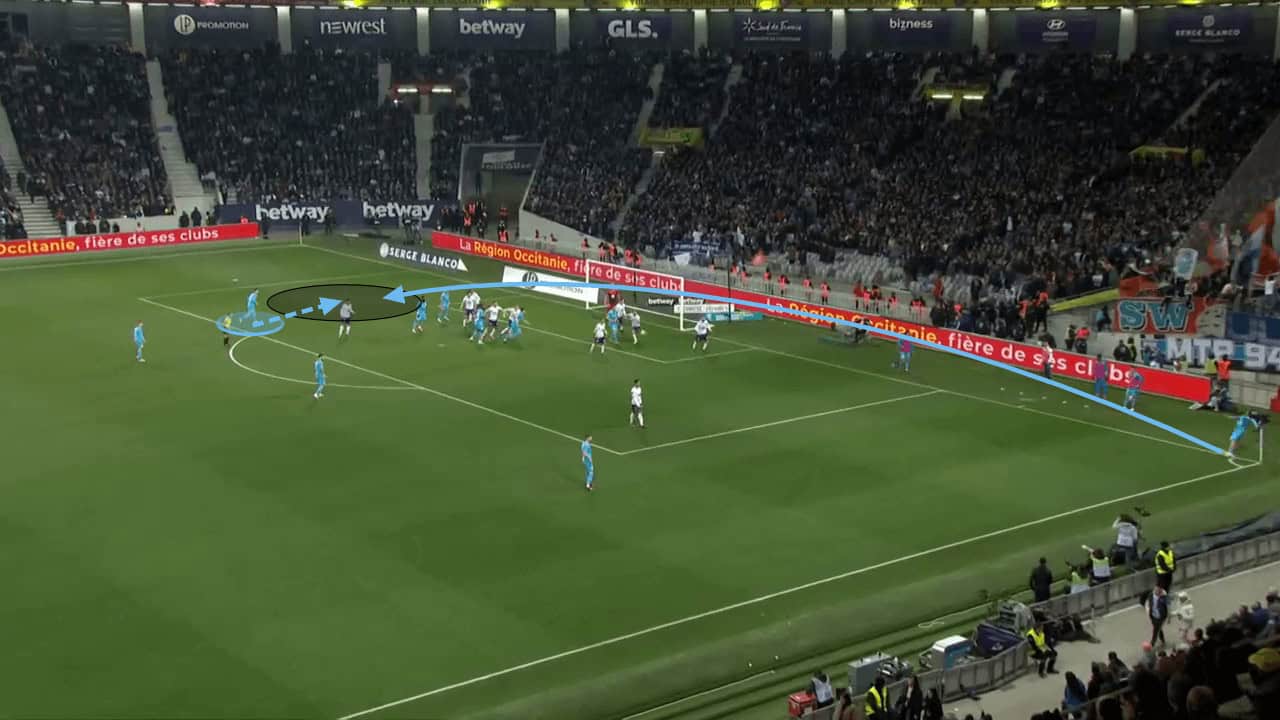
Another benefit of having such an attacking system is the number of bodies in and around the six-yard box, which can all react to loose balls after a knockdown or rebounded effort. We can see in the image below, four Marseille players are spread around the six-yard box, meaning that, irrelevant of where the ball bounces, there will be an attacker ready to react to and finish off a loose ball. Having such a heavy presence around for second balls also means that the original corner doesn’t have to be aimed into a crowded area, and so corners can be frequently more accurate if they can be aimed towards either post, before being flicked towards the centre.
This heavy central presence also helps prevent counterattacks, as an attacker will always be close enough to the ball to block any potential clearances.
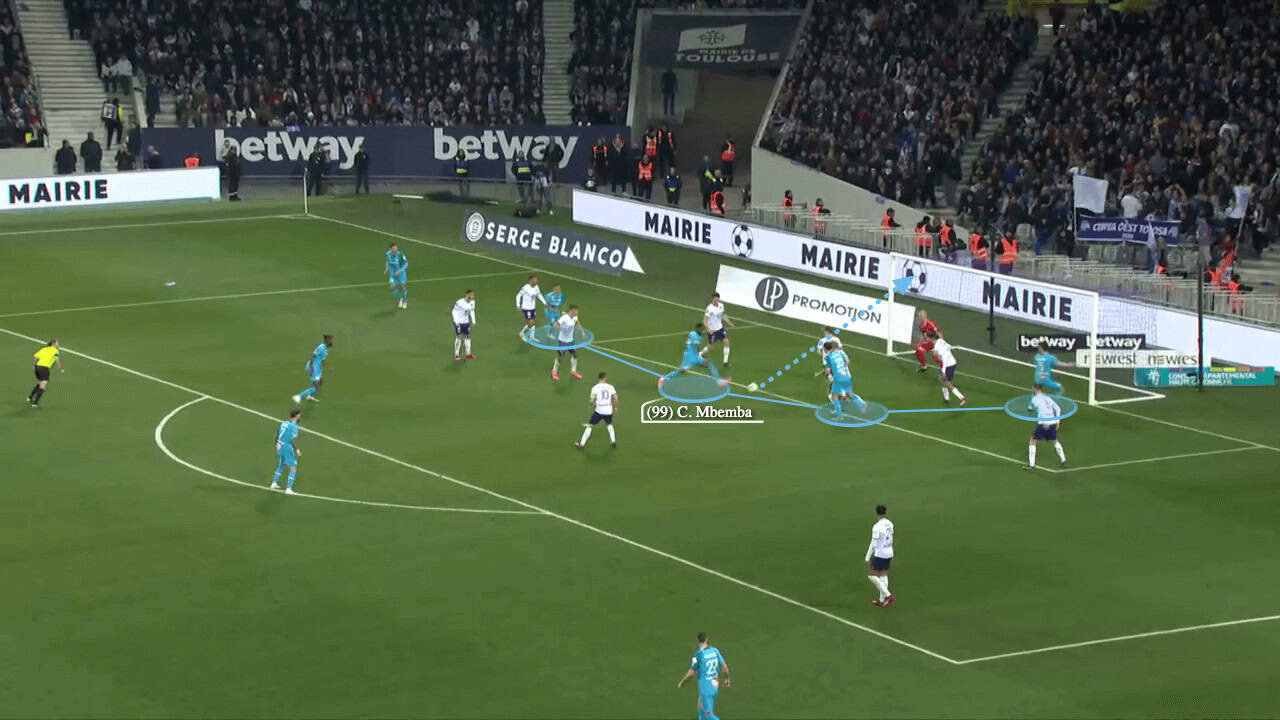
We explained earlier how the whip of the crosses allows Marseille to put the ball into areas which usually aren’t accessible for most other teams. In this example below, we can see the Marseille attacker make clever use of a body feint to give himself time and space to attack the unmarked back post. It is impossible for defenders to defend the back post, as they cannot see both the player and the ball unless they start behind the attackers, which would provide attackers with the separation they desperately look to find in each corner.
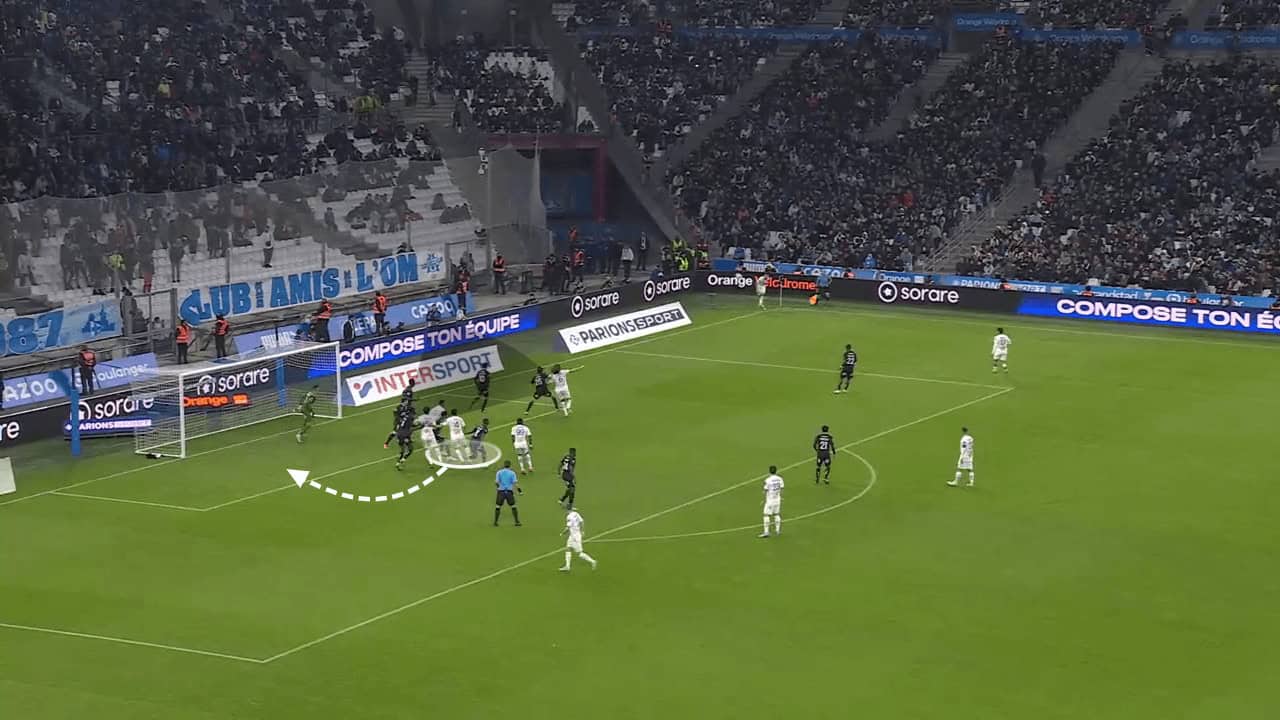
With the back post unmarked, Malinovskyi shows he has the ability to perfectly whip the ball into the target area without giving his opponents the time to react and reach the ball. In usual cases, the goalkeeper would be able to reach the ball if it landed in the target area shown below, ahead of any attackers. However, due to the flat and quick cross, the goalkeeper is unable to intercept the cross and so the early movement by the attacker means he is able to reach the ball just in time, with an unopposed header from within three yards.
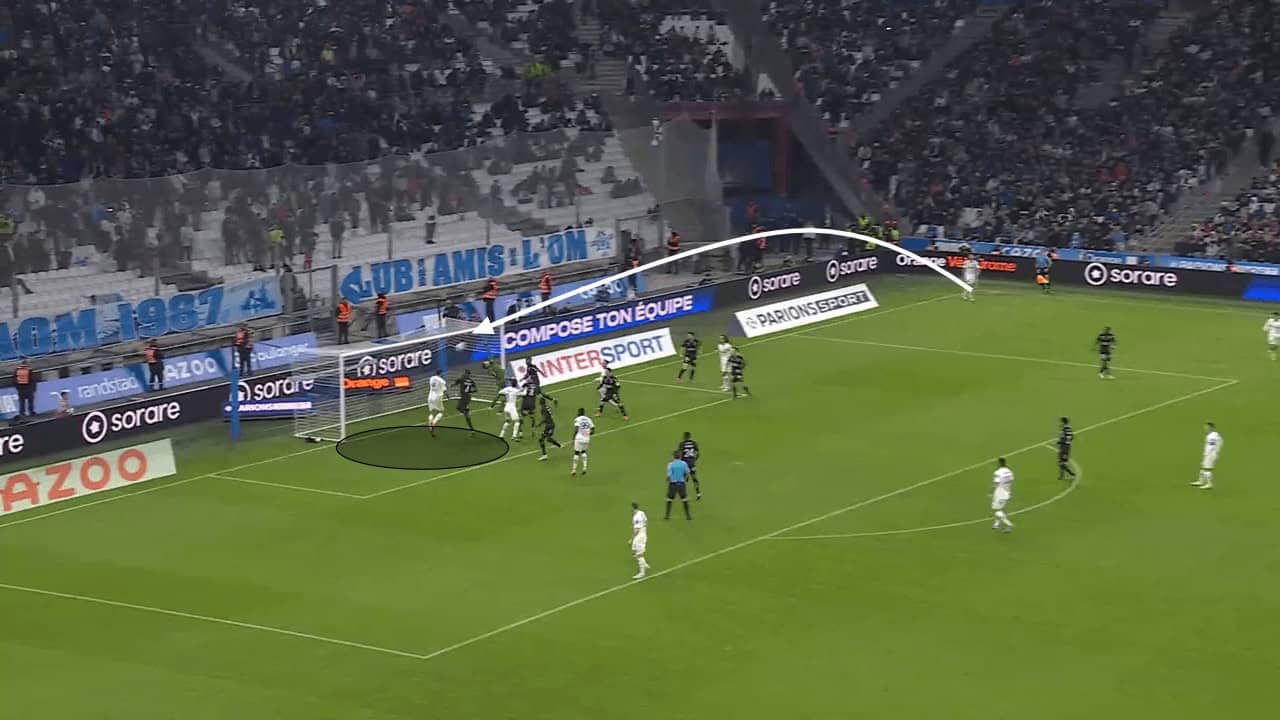
Marseille have also shown the adaptability to change the routines dependent on the situation in the game. Unlike in previous examples, Brest had the back of the six-yard box zonally covered, so there was no space within the two posts for an attacker to attack the ball from. As a result, Marseille have been smart in dragging their opponents out of position by playing short corners to attract pressure. As in almost every scenario, the defending team gets too attracted to the ball, with everyone’s eyes fixed on the ball and gradually moving towards it.
The short corner means that the defending team starts to lose its shape before a run from deep can be made unnoticed due to everyone’s eyes being peeled to the ball. The example below shows just how much space can be created at the back post through a short corner where everyone gravitates towards the ball.
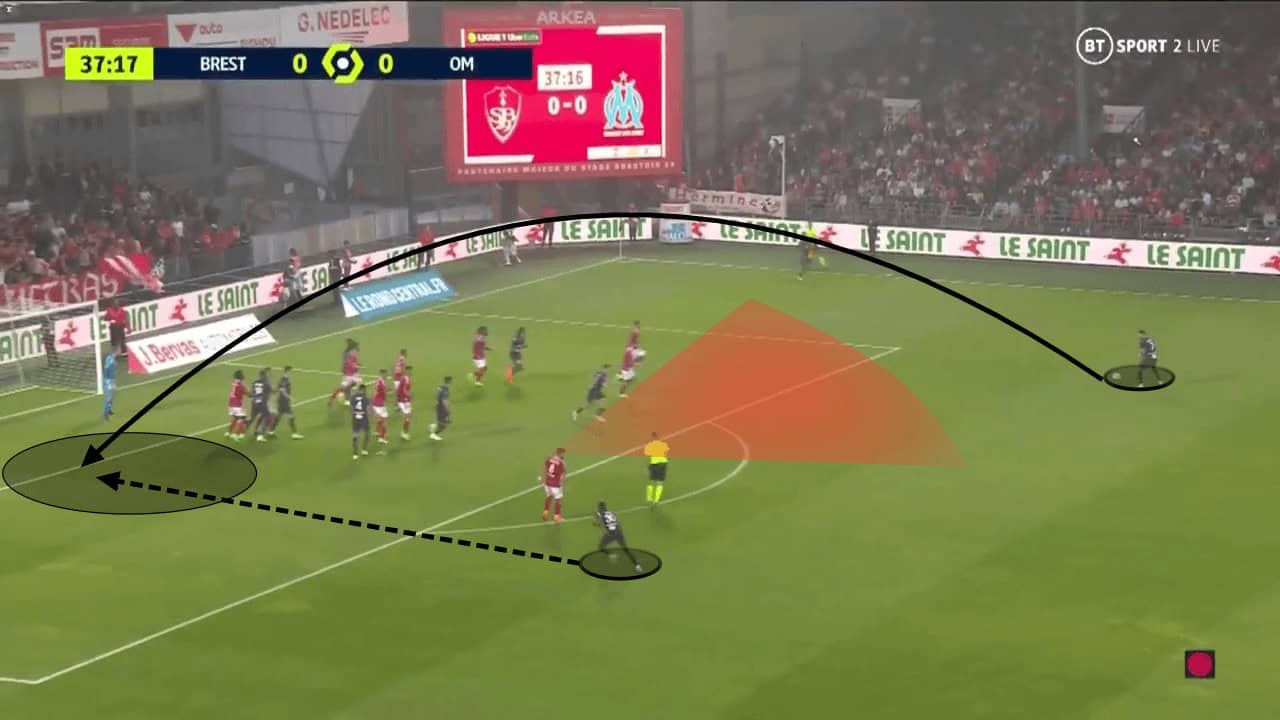
Near-post Deliveries
Like any other team, Marseille must be able to take a number of different corner routines, to avoid becoming predictable. Whilst the whip to the back post can be the most effective method of generating clear-cut chances for their players, the flick from the near post has proven to be highly effective as well.
We can see in the image below, Marseille purposefully leave the space at the near post open to prevent zonal markers from expecting any potential near-post deliveries. Mateo Guendouzi then attacks the intended space through a run from the blindside of the defence, from inside the goal. Arriving from the defender’s blindside means that attackers can gain a yard or two of space before the defender reacts and starts to mark them. If the timing is right, by that point it is usually too late.
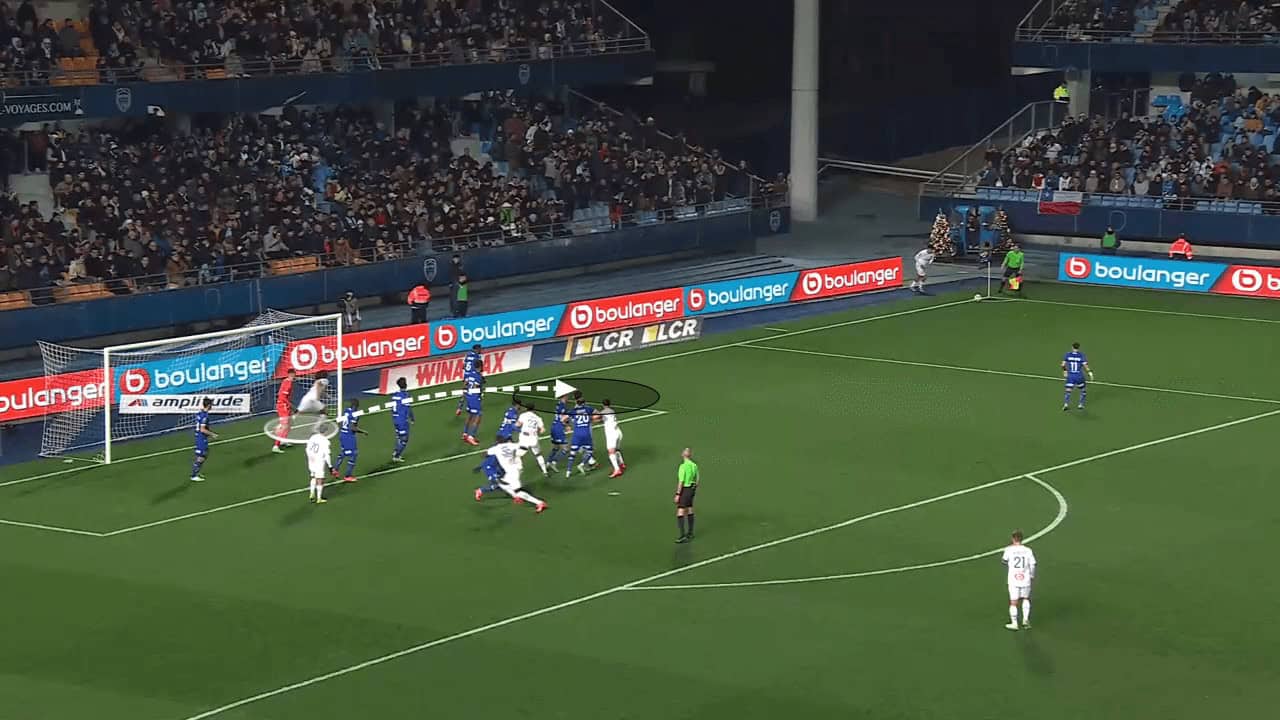
Marseille have again shown their adaptability to generate the space inside the target areas, through more short corners. In this case, the short corner attracts pressure from the first zonal markers, who were originally marking the intended target area. This is extremely hard to defend against, as the zonal markers are left with a tough decision, whether to defend the space or press the men on the ball. Either way, this will cause a problem for the defending team, unless the pressure is applied by someone with no defensive responsibilities.
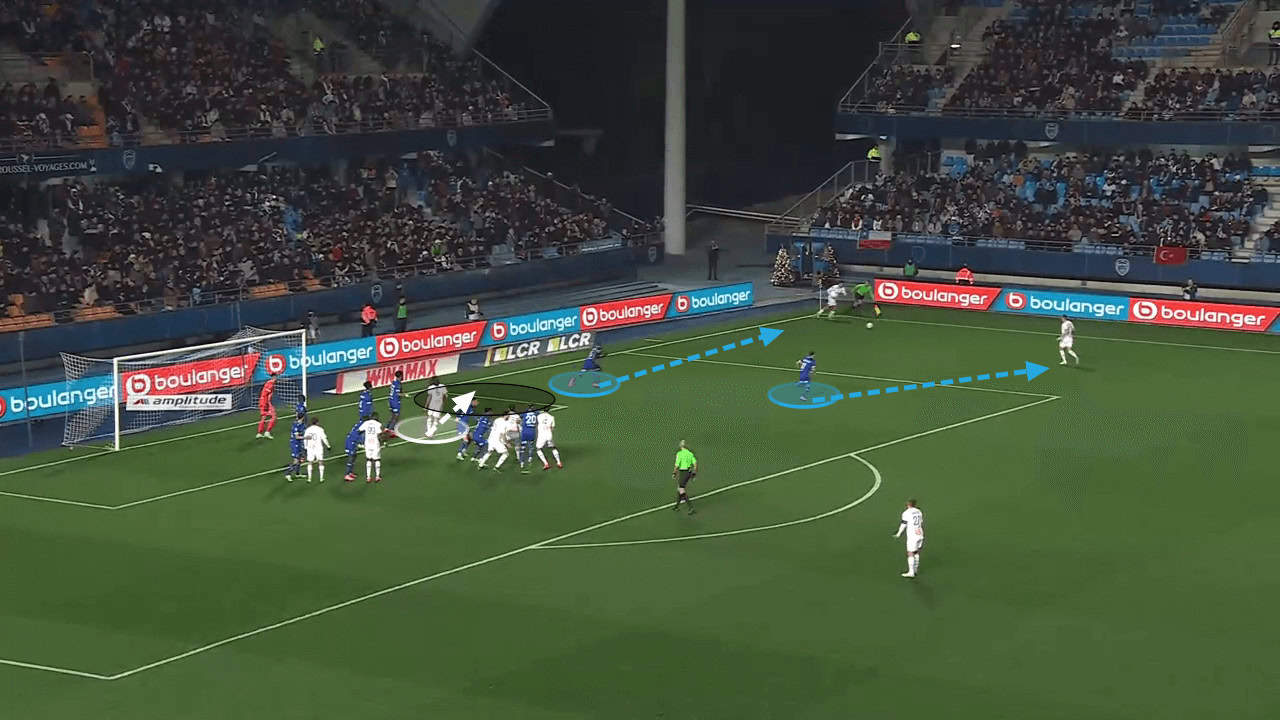
After the defenders choose to leave their zonal areas, the ball is delivered into that area, from where the flick-on can again be made. Once a flick from inside the six-yard box is made, it becomes almost impossible to defend against. Defenders cannot be behind the ball as they attempt to hold the offside line slightly further up the pitch.
With the ball travelling across the face of the goal, defenders are ahead of the ball and have no choice but to allow the ball to fly past them. As a result, it becomes easy for offensive players to attack the ball, with only a small touch required to redirect the ball into the back of the net. As long as the attacker has a slight amount of separation, they should be able to use that momentum to break past the defensive line and into the path of the flick-on.
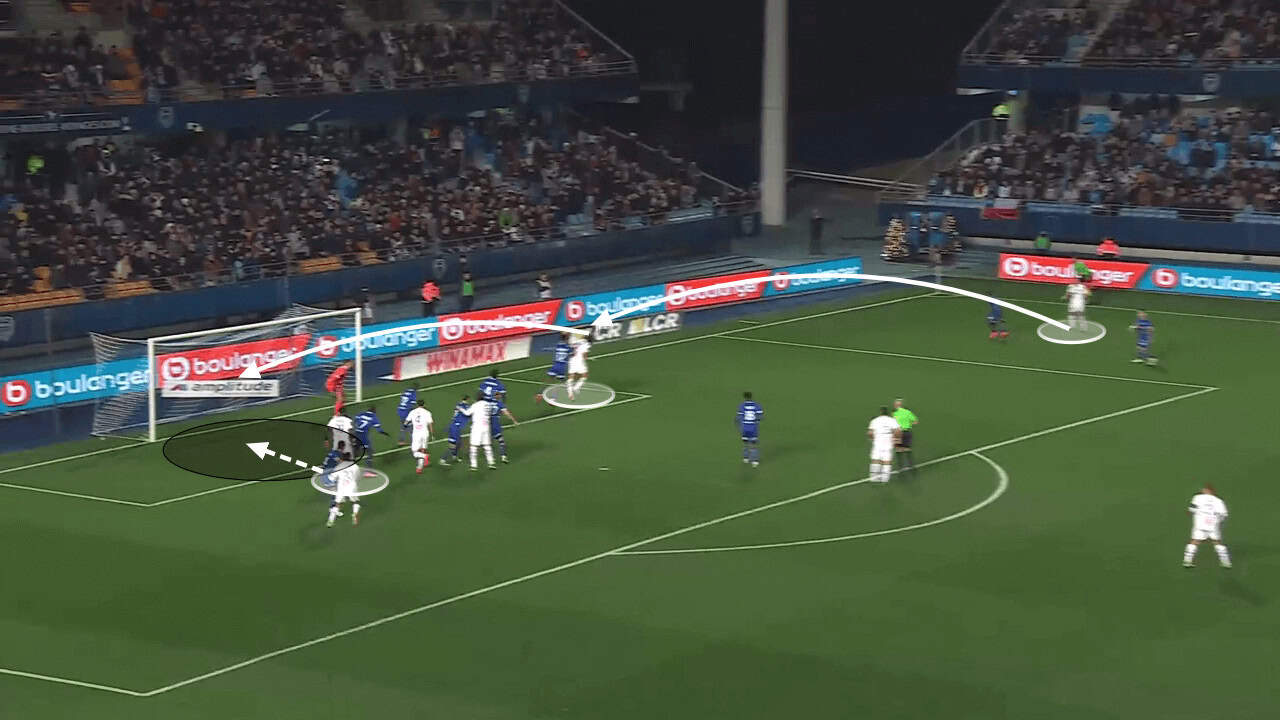
Summary
This set-piece analysis has demonstrated the numerous ways in which Marseille have been able to create high-quality chances through set plays, guiding them to the Champions League spots for back-to-back seasons.
While Marseille haven’t used a large variety of methods or techniques such as screens or decoy runs, they have demonstrated that it is possible to consistently be threatening from corners if the team possesses a dead-ball specialist. The value of specialist free-kick takers could rise in the future, with corners and free-kicks providing a simpler path of creating chances for teams, no matter whether they have a big or small team, as long as the delivery is laser-accurate.






Comments